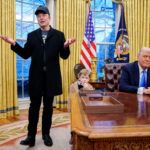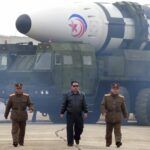60 years later: How many nuclear weapons did the US and USSR have in the Cuban Missile Crisis?
By Hans M. Kristensen, Robert S. Norris | October 12, 2022
 Photo by Cecil Stoughton. White House Photographs. John F. Kennedy Presidential Library and Museum, Boston
Photo by Cecil Stoughton. White House Photographs. John F. Kennedy Presidential Library and Museum, Boston
(Editor’s note: To mark the upcoming sixtieth anniversary of the start of the Cuban Missile Crisis, the Bulletin of the Atomic Scientists is re-printing this Nuclear Notebook, which was originally published on November 1, 2012.)
Nuclear Notebook: How many nuclear weapons were operational during the Cuban Missile Crisis?
There is little argument that October 1962—the Cuban Missile Crisis—marked the closest the world has come to nuclear war. Today, 60 years later, volumes have been written about the crisis. Even so, in the tens of thousands of pages that interpret and analyze this conflict, there are essential details missing—specifically, a comprehensive nuclear order of battle. That is, there still remains to be a full accounting of the numbers and types of US and Soviet nuclear weapons that were operational, some of which were on high levels of alert and could have been readily used, from mid-October to November 20, 1962, when the naval blockade of Cuba ultimately ended.
Depending on their range, yield, location, and delivery mode, the types of nuclear weapons varied. Most writings on the crisis, however, describe certain weapon types and leave others out. The tally, therefore, remains incomplete…
To read this full article for free, visit our online archive here.
To download a PDF of this article, click this link.
To read an authoritative accounting of world nuclear arsenals, click here for all Nuclear Notebook columns.
This copy of the Nuclear Notebook was originally researched and written in 2012 by Hans M. Kristensen, director of the Nuclear Information Project with the Federation of American Scientists and Robert S. Norris, a senior fellow with the FAS. The Nuclear Notebook column has been published in the Bulletin of the Atomic Scientists since 1987.
Together, we make the world safer.
The Bulletin elevates expert voices above the noise. But as an independent nonprofit organization, our operations depend on the support of readers like you. Help us continue to deliver quality journalism that holds leaders accountable. Your support of our work at any level is important. In return, we promise our coverage will be understandable, influential, vigilant, solution-oriented, and fair-minded. Together we can make a difference.
Keywords: Cuban Missile Crisis, nuclear war, nuclear weapons
Topics: Analysis
















It’s worth noting that the Cuban Missile Crisis came about because Kennedy had launched an undeclared war on Cuba.